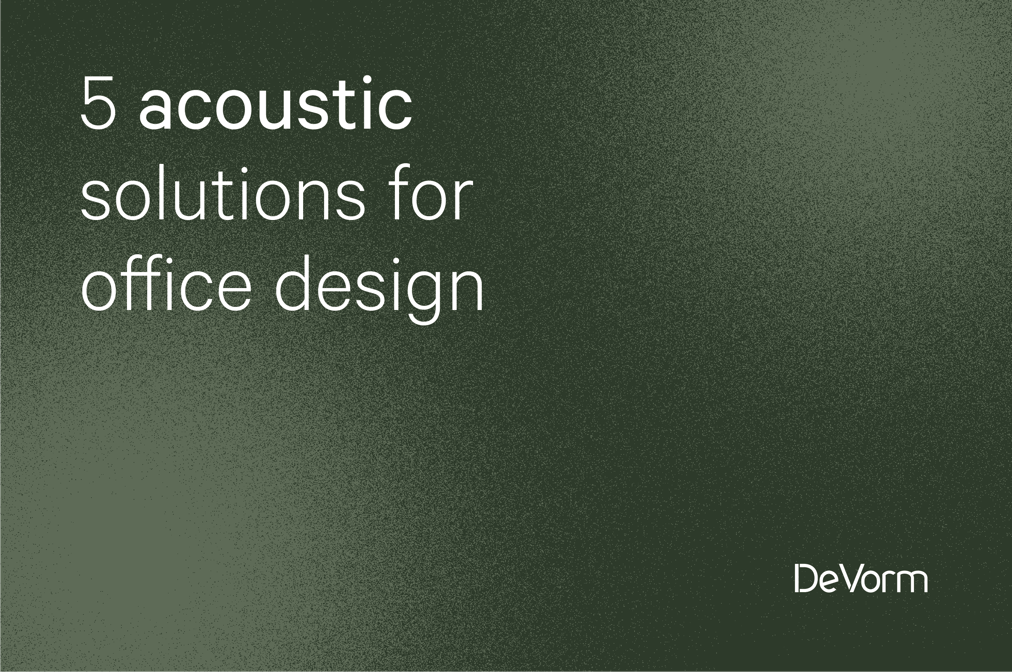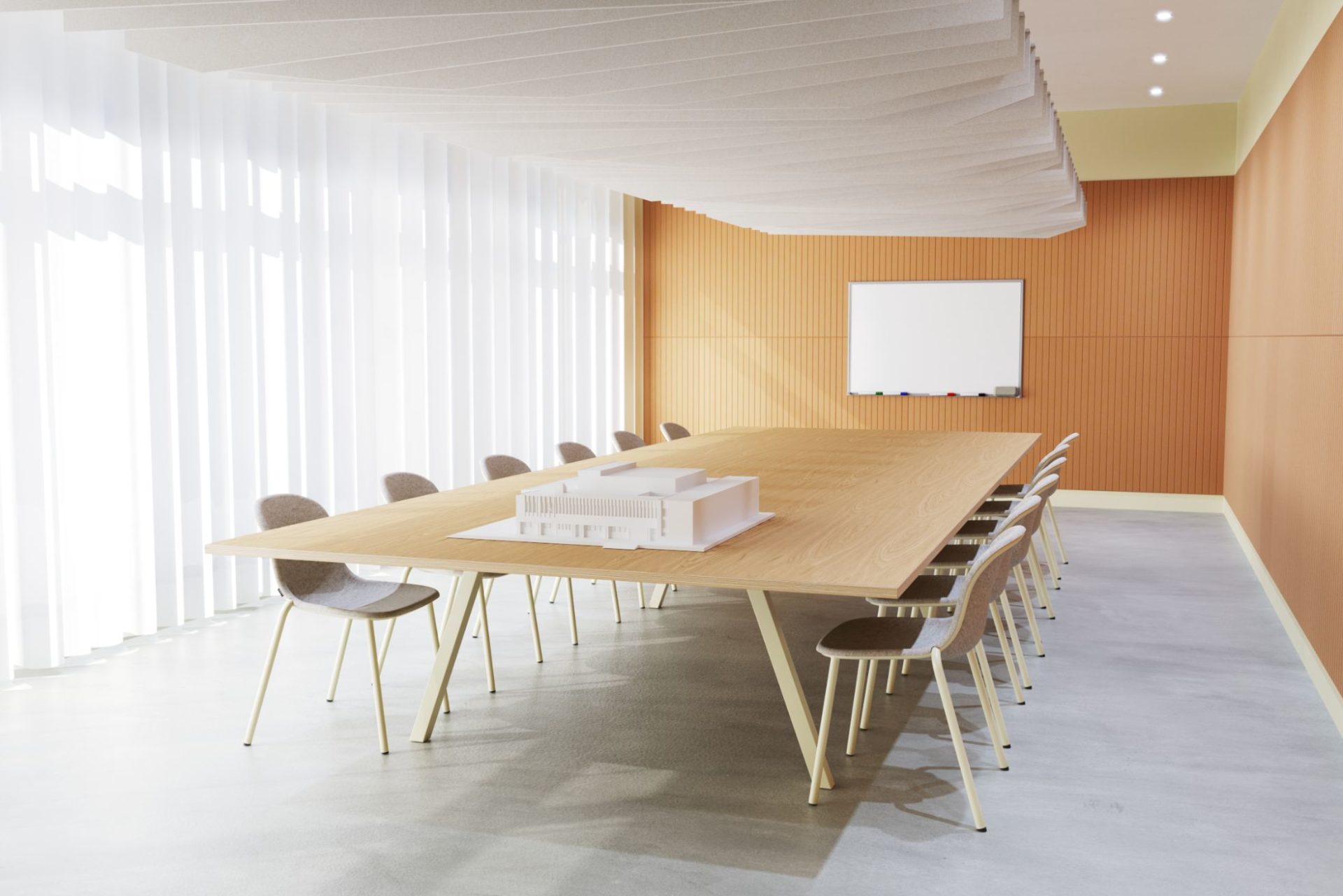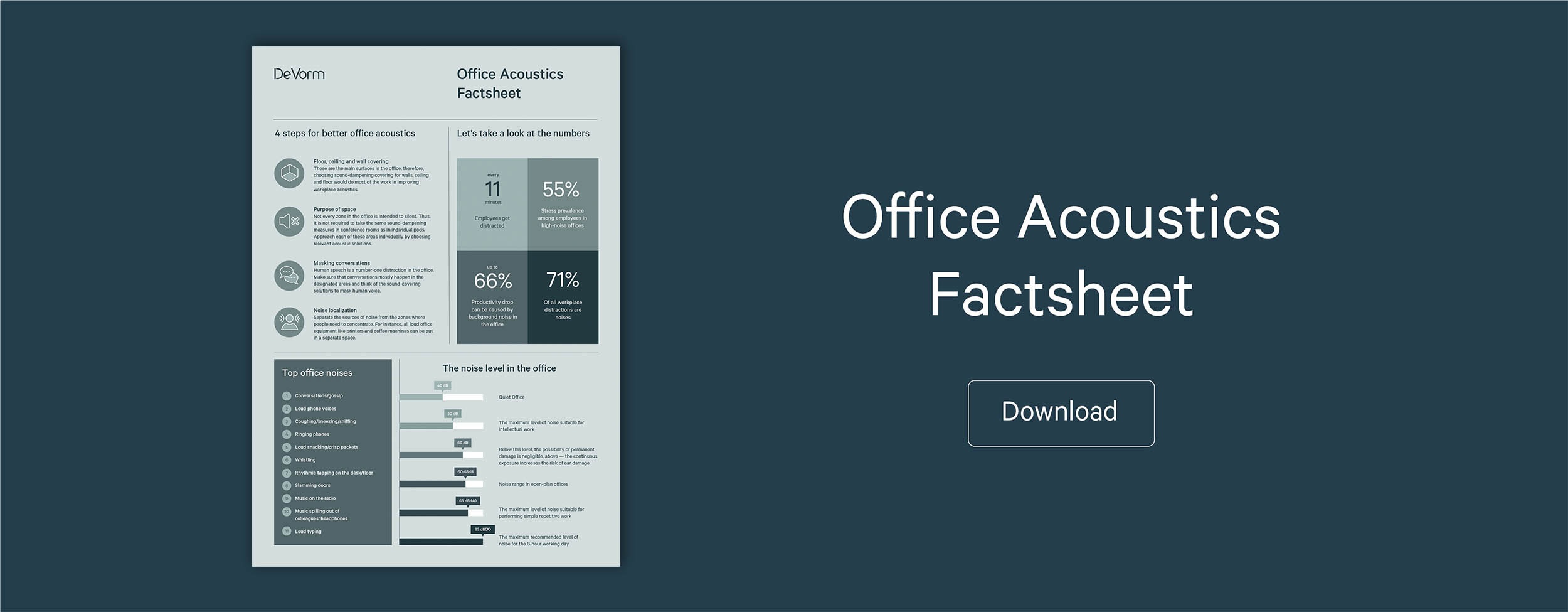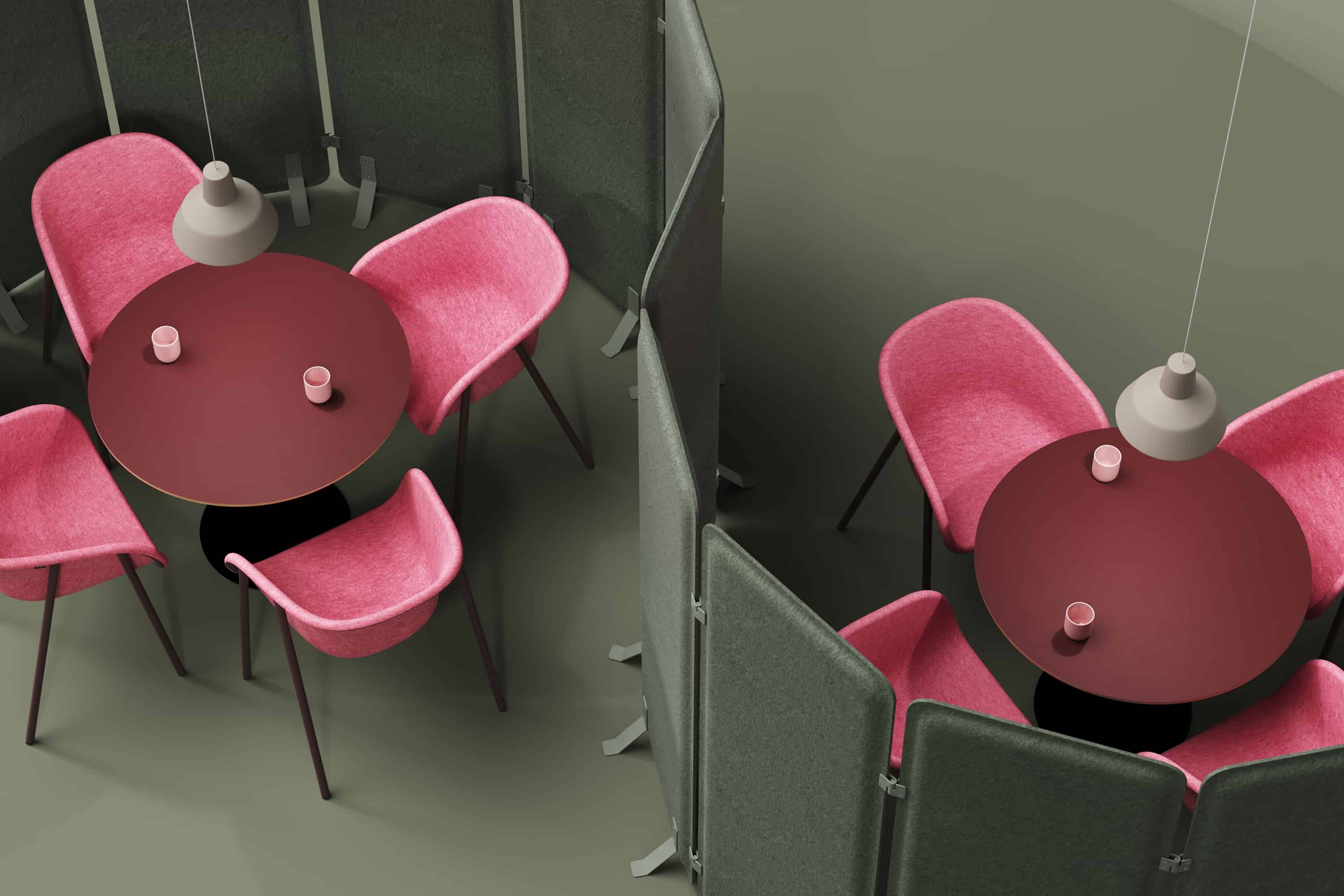Journal
5 Acoustic Solutions for Office Design
Noise is the most common complaint in modern offices. 70% of employees say their efficiency would increase if their office wasn’t as noisy. An alarming problem and yet one that is remarkably easy to solve. If you use these tools you could improve your office acoustics in a simple and effective way.

ABC of acoustic design
Absorbing
Certain materials can take in sound energy and partly transform it into heat. This quality is known as sound absorption. As a result, the intensity of the sound is minimized to a certain degree. Sound absorption helps to deal with the noise directly by removing it from the space. Such solutions are considered to be the most effective in acoustic design. These include soft wall and flooring materials, like acoustic panels and carpets, along with room dividers and some types of furniture. You can check the NRC (Noise Reduction Coefficient) rating of such products to see how well they absorb the sound.
Blocking
Sound blocking or soundproofing occurs when the sound waves bounce off surfaces that they are unable to travel through. In other words, such materials prevent the sound from entering or leaving a particular space. As opposed to absorbing elements, soundproof solutions are made from dense solid materials, like cement or metal. Such products receive an STC (Sound Transmission Class) to measure their sound-blocking properties.
Covering
Sound covering is the process of adding background sounds to reduce noise distractions. Yes, you got it right — covering means reducing noise by adding extra noise. Contradictory as it is, the technique is proven to work. By raising the ambient noise level, you can make human speech less intelligible and therefore less distracting. Sound masking can be achieved by engineering an ambient sound similar to airflow that matches the frequencies of human speech. As a result, human conversations can be heard on a much smaller radius.
5 acoustic solutions for workplace design
Acoustic wall panels
Wall panels are an effective way of combating bad office acoustics. Nowadays, there are plenty of options to choose from — such panels can be made from compressed foam, wool, wood or even recycled plastic bottles. PET Felt is a great choice for your acoustic walls in the office. Not only do these panels provide sound-absorbing properties, but they are also easy to process and customize. As a result, PET Felt panels can be easily produced into endless variations of shape and form to contribute to the aesthetic look of your office design.

Did you know?
PET Felt is a sustainable and durable material with an excellent acoustic performance. It is made from recycled plastic bottles — whereby thin fibres of plastic are interwoven together to form felt. Due to its porous structure, PET Felt effectively absorbs sound. It is often used for various acoustic solutions in office design.
Bonus tip
Acoustic panels can also be attached to the ceiling or hung horizontally to minimize the floor-to-ceiling slap echo.
Ceiling baffles
Ceiling is a major reflective area in a room, which is often being overlooked in acoustic treatment. When left exposed, ceilings will reflect the sound waves, spreading them further through a space. PET Felt Baffles prevent the sound waves from bouncing off the ceiling. When placed above the sound source, such as a conference table, the Baffles will directly trap the noises, making sure they don’t travel further. Thanks to air gaps and varying shapes, the baffles work for different sound frequencies, minimising the floor-to-ceiling slap echo.

Privacy furniture
Some furniture is specifically designed to create a sensation of privacy. Shielded chairs and high-back sofas can be used to create a room within a room separating its users from the environment. Acoustic properties play a crucial role here, so it’s advisable to choose furniture made from sound-absorbing or sound-blocking materials.

Workplace dividers
Another simple way to improve office acoustics is installing workplace and room dividers. Specifically designed to minimize the noise, these objects also help you avoid visual distractions. Using space dividers absorb the sounds where it’s needed — at individual workstations or within silence zones. An additional benefit of having such movable walls is that the office layout can be easily adjusted to the employees’ needs — a large conference table can become a working station for the whole team, where everyone has their separate place.

Bonus tip
Opt for a workplace divider lamp — a 2-in-1 solution for improved acoustics and office lighting.
Space partitions
Separating noises from within the workspace is a direct method of acoustic management. It’s much easier to minimize the distracting sounds when their sources are collected in one place rather than scattered around the office. Use space dividers and flexible partitions to outline the noisy areas, such as informal meeting spots and call rooms. Since such solutions offer extra sound-absorbing effect, they will make sure that conversations don't distract the rest of the workers.
Some sound-absorbing materials fit multiple acoustic solutions. For instance, PET Felt is typically used for acoustic panels, but due to its tactile properties, the material can also be pressed to make furniture. Other applications of PET Felt include lamps, room dividers and decor elements. Read our next article to learn how PET felt can benefit your interior acoustically.




